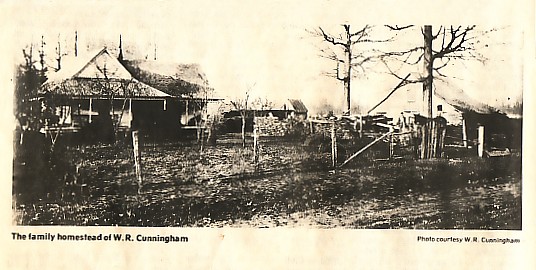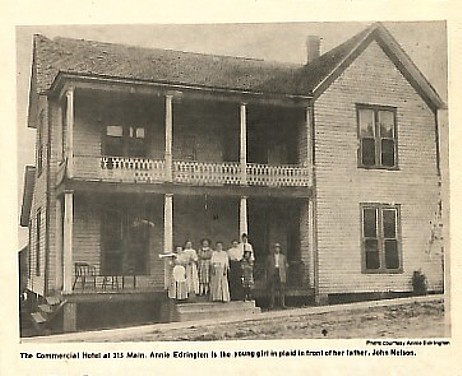
| The family homestead of W. R. Cunningham Photo courtesy: W. R. Cunningham |
I remember:
Traveling to Texas
by wagon with a family of 10

Greene County Arkansas
Paragould, Arkansas
Centennial Edition Section 5
12- Section 5, Centennial Edition Monday, August 29,1983, Paragould Daily Press
==============================================================================================================

I remember: |
 |
My father's farm was
located just about in the middle of the Unity neighborhood. In the
spring of 1899, my father sold the farm to Mr. Sam McHaney, a well-known
investor in those days. The purchase price was $325. |
He told my mother crops would be too uncertain there and that
we were going back to Arkansas. And go, we did. We arrived at Wes
Stimson's home late one evening in early September.We arrived at Wes
Stimson's home late one evening in early September. Now I must tell you of a thing that happened to my dad and Wes Stimson. One day back in the late '80s, the two went hunting in Locust Creek bottom lands. While hunting, they suddenly came in contact with a wild sow with a litter of pigs. Well, action began instantly. The sow came at them with her big mouth open, ready to battle. Wes Stimson threw his gun down and skinned up a sapling, but my dad stood his ground with his gun poked forward, which the sow grabbed, chewing on it. Surely my dad was under providential care, for the old sow quit wrestling with the gun muzzle and went chasing off after her pigs. Many things have happened to the family since then. In the course of time, Father and Mother died, fulfilling their mission on earth. And one-by-one, others of the family have passed away so that I, alone, of the J. E. Cunningham family, remain - just waiting for the summon to come up hither. So death is sure and one generation follows another. W.R. Cunningham |
The Commercial Hotel at 215 Main. Annie Edrington is the young girl in
plaid in front of her father, John Nelson
|
| Going on camp hunts and making
The Beech Grove Community got its name from a group of settlers who came
to live in a grove of beech trees. |
ic | e cream on the Fourth of July
I remember Haud Cooper made all the caskets for the dead. They were made
of pine lumber and lined with satin. Dead people were laid out in the
home and they were carried to the cemetery in a wagon drawn by a team of
mules. |
|
Transcribed by: PR Massey
Return to Greene County, Arkansas Centennial Edition
Return to Greene County, Arkansas Newspapers
Return to Greene County, Arkansas Index Page
©2011 PR Massey